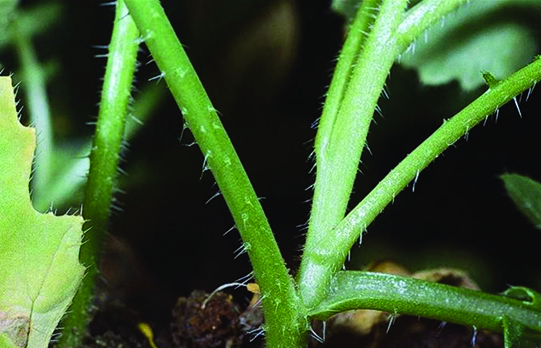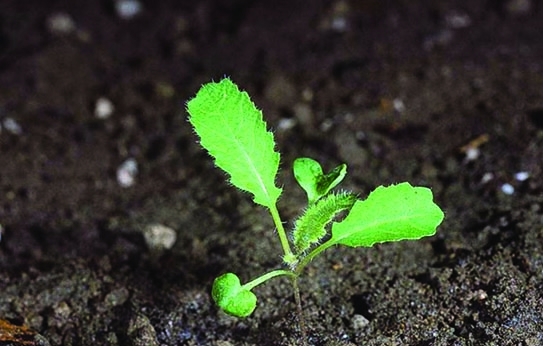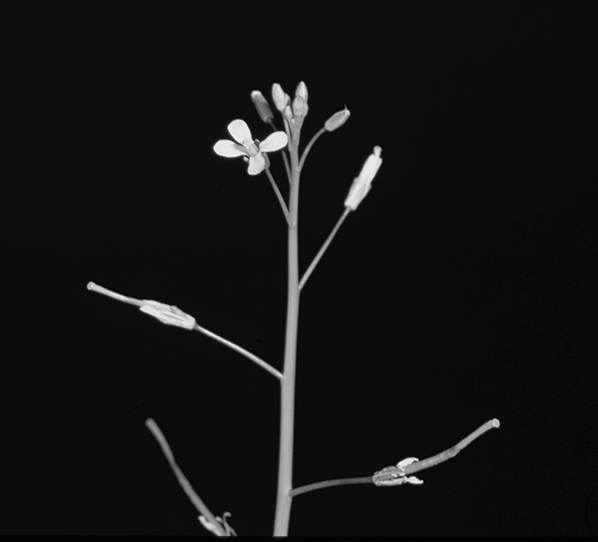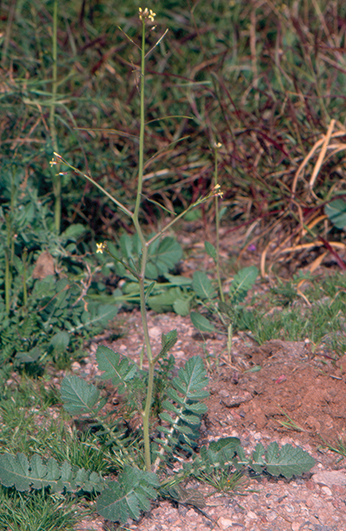Stem
- Up to 3 ft. tall and branched; upper stem lacks hair (glabrous); lower stem covered with stiff, downward-pointing hairs.

Closeup of the central stem
Leaves
- Rosette leaves up to 12 in. long and pinnate-divided with 6-14 pairs of leaflets; edges (margins) are toothed.
- Stems have very few leaves; typically small and oval to strap-like (linear) with toothed to lobed edges.

First leave of a sprouting plant
Flower
- Small (less than 0.6 in. wide) and yellow with four petals.
- Seed pods are round, slender and 1.5-2.5 in. long; the end tapers to a point; contain numerous round seeds; pod constricts around seeds (appears beaded).

Closeup of the inflorescences
Other
- Grows best in sites with dry, sandy soils and sparse vegetation; often infests roadsides, waste areas, washes and desert areas; known to occur in Clark, Lincoln and Nye counties.
- Annual; reproduces by seed
- Also known as Sahara mustard

Adult plant
Control
- Repeated hand-removal can be effective; disturbances such as fire, tillage and grazing often promote mustard growth.
- Apply 2,4-D, glyphosate or triclopyr post-emergence; chlorsulfuron or imazapic pre- or post emergence.
Blecker, L., Creech, E., Dick, J., Gephart, S., Hefner, M., H. Kratsch, Moe, A., Schultz, B.
2020,
Nevada Noxious Weed Field Guide – African mustard,
Extension, University of Nevada, Reno, Field Guide


